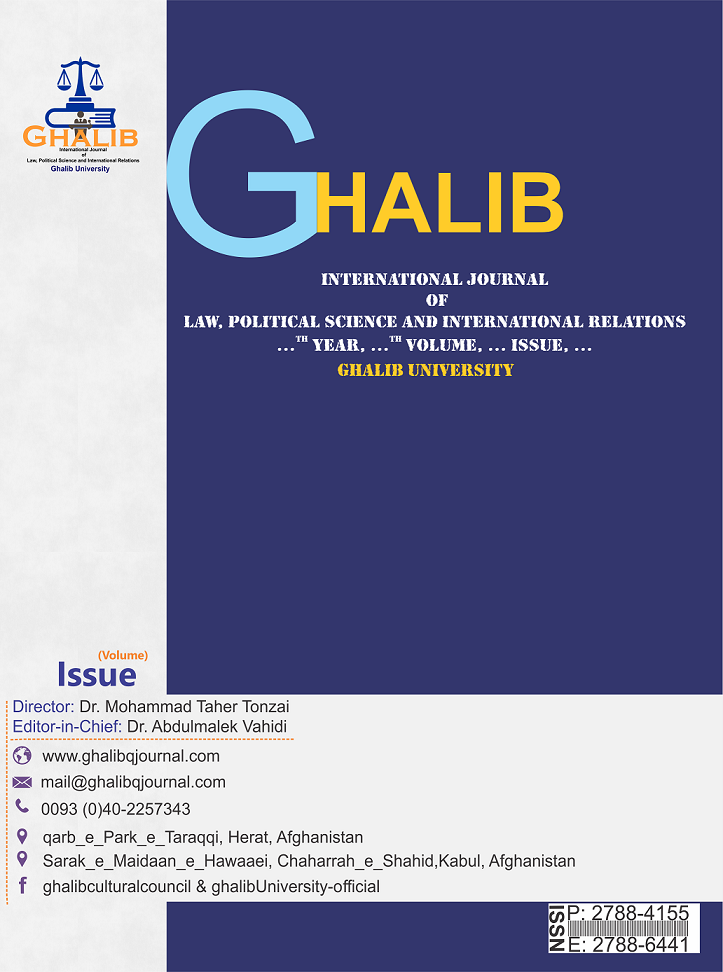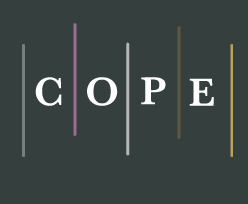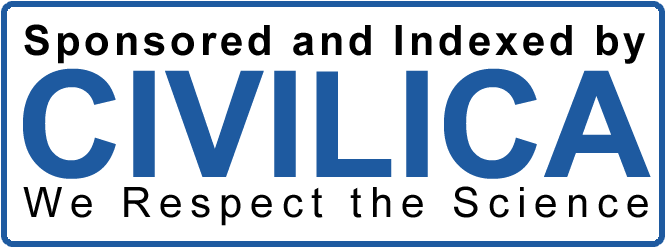Oral health status to sociodemographic and behavioral factors among women of reproductive age in Herat city
(2022)
DOI:
https://doi.org/10.58342/.v11i3.88Keywords:
Oral health, tooth decay, women, fertility, pregnancy, HeratAbstract
Objectives: Oral health of women during reproductive age is an important public health issue. Not only it can compromise pregnancy outcomes, but also it may affect their newborn’s overall health. The aim of this study was to assess the oral health status and associated factors in women of reproductive age in Herat city.
Methods: In this cross-sectional descriptive study, a group of 411 women of reproductive age between 18-65 years was studied from17 Jan to 28 May 2022 at the Ghalib, Hakimi and other dental clinics in Herat city.
Results: In this study, 50.4% of women were under 18 years old, 74.5% were married, and 47.4% were housewives. The mean and standard deviation of the DMFT index among the participants was 6.86±5.56 and 50.6% have severe tooth decay (DMFT>4). There was a statistically significant difference between the level of education, age, number of births, and the use of carbonated drinks and caries index (p<0.005).
Conclusion: Oral health status of women in reproductive age was not satisfactory, having an average of 5.5 decayed teeth in their mouth. Increasing the level of education and raising awareness among women of reproductive age is one of the effective measures to improve oral and dental health among these women and their children. It is very necessary to carry out wider studies in the country to determine more precisely the factors of dental caries among reproductive age women.
References
Adair, P. M., Pine, C. M., Burnside, G., Nicoll, A. D., Gillett, A., Anwar, S., Broukal, Z., Chestnutt, I. G., Declerck, D., Ping, F. X., & others. (2004). Familial and cultural perceptions and beliefs of oral hygiene and dietary practices among ethnically and socio-economicall diverse groups. Community Dental Health, 21(1 Suppl), 102–111.
Ahmadian-Yazdi, A., & Sanatkhani, M. (2003). A descriptive survey of the oral health on a group of the Asian pregnant women resident in the UK. Journal of Mashhad Dental School, 27(Issue), 93–99.
Al-Tamimi, S., & Petersen, P. E. (1998). Oral health situation of schoolchildren, mothers and schoolteachers in Saudi Arabia. International Dental Journal, 48(3), 180–186. https://doi.org/10.1111/j.1875-595X.1998.tb00475.x
American Academy of Periodontology. (2004). American Academy of Periodontology Statement Regarding Periodontal Management of the Pregnant Patient. Journal of Periodontology, 75(3), 495–495. https://doi.org/10.1902/jop.2004.75.3.495
Azimi, S., Taheri, J. B., Tennant, M., Kruger, E., Molaei, H., & Ghorbani, Z. (2018). Relationship Between Mothers’ Knowledge and Attitude Towards the Importance of Oral Health and Dental Status of their Young Children. Oral Health & Preventive Dentistry, 16(3), 265–270. https://doi.org/10.3290/j.ohpd.a40760
Bates, S. B., & Riedy, C. A. (2012). Changing knowledge and beliefs through an oral health pregnancy message. Journal of Public Health Dentistry, 72(2), 104–111.
Deghatipour, M., Ghorbani, Z., Ghanbari, S., Arshi, S., Ehdayivand, F., Namdari, M., & Pakkhesal, M. (2019). Oral health status in relation to socioeconomic and behavioral factors among pregnant women: A community-based cross-sectional study. BMC Oral Health, 19(1), 117. https://doi.org/10.1186/s12903-019-0801-x
Ghaffari, M., Rakhshanderou, S., Safari-Moradabadi, A., & Torabi, S. (2018). Oral and dental health care during pregnancy: Evaluating a theory-driven intervention. Oral Diseases, 24(8), 1606–1614. https://doi.org/10.1111/odi.12928
Gharehghani, M. A. M., Bayani, A., Bayat, A.-H., Hemmat, M., Karimy, M., Ahounbar, E., Armoon, B., Fakhri, Y., & Schroth, R. J. (2021). Poor oral health-related quality of life among pregnant women: A systematic review and meta-analysis. International Journal of Dental Hygiene, 19(1), 39–49. https://doi.org/10.1111/idh.12465
Gürsoy, M., Pajukanta, R., Sorsa, T., & Könönen, E. (2008). Clinical changes in periodontium during pregnancy and post-partum. Journal of Clinical Periodontology, 35(7), 576–583.
Hessari, H., Vehkalahti, M., Eghbal, M. J., & Murtomaa, H. (2009). Lifelong exposure to smoking and oral health among 35- to 44-year-old Iranians. Oral Health & Preventive Dentistry, 7(1), 61–68.
Hessari, H., Vehkalahti, M. M., Eghbal, M. J., Samadzadeh, H., & Murtomaa, H. T. (2008). Oral Health and Treatment Needs among 18-Year-Old Iranians. Medical Principles and Practice, 17(4), 302–307. https://doi.org/10.1159/000129610
Honkala, S., & Al-Ansari, J. (2005). Self-reported oral health, oral hygiene habits, and dental attendance of pregnant women in Kuwait. Journal of Clinical Periodontology, 32(7), 809–814. https://doi.org/10.1111/j.1600-051X.2005.00770.x
Hullah, E., Turok, Y., Nauta, M., & Yoong, W. (2008). Self-reported oral hygiene habits, dental attendance and attitudes to dentistry during pregnancy in a sample of immigrant women in North London. Archives of Gynecology and Obstetrics, 277(5), 405–409. https://doi.org/10.1007/s00404-007-0480-8
Kandan, P. M., Menaga, V., & Kumar, R. R. R. (2011). Oral health in pregnancy (guidelines to gynaecologists, general physicians & oral health care providers). JPMA. The Journal of the Pakistan Medical Association, 61(10), 1009–1014.
Kumar, S., Tadakamadla, J., Tibdewal, H., Duraiswamy, P., & Kulkarni, S. (2013). Factors influencing caries status and treatment needs among pregnant women attending a maternity hospital in Udaipur city, India. Journal of Clinical and Experimental Dentistry, 5(2), e72.
Madani, A. H., Dikshit, M., & Bhaduri, D. (2012). Risk for oral cancer associated to smoking, smokeless and oral dip products. Indian Journal of Public Health, 56(1), 57–60. https://doi.org/10.4103/0019-557X.96977
Marla, V., Srii, R., Roy, D. K., & Ajmera, H. (2018). The importance of oral health during pregnancy: A review. MedicalExpress, 5.
Martínez-Beneyto, Y., Vera-Delgado, M. V., Pérez, L., & Maurandi, A. (2011). Self-reported oral health and hygiene habits, dental decay, and periodontal condition among pregnant European women. International Journal of Gynecology & Obstetrics, 114(1), 18–22.
Mills, L. W., & Moses, D. T. (2002). Oral Health During Pregnancy. MCN: The American Journal of Maternal/Child Nursing, 27(5), 275–280.
Moimaz, S. A. S., Fadel, C. B., Lolli, L. F., Garbin, C. A. S., Garbin, A. J. Í., & Saliba, N. A. (2014). Social aspects of dental caries in the context of mother-child pairs. Journal of Applied Oral Science, 22, 73–78. https://doi.org/10.1590/1678-775720130122
Okada, M., Kawamura, M., Kaihara, Y., Matsuzaki, Y., Kuwahara, S., Ishidori, H., & Miura, K. (2002). Influence of parents’ oral health behaviour on oral health status of their school children: An exploratory study employing a causal modelling technique. International Journal of Paediatric Dentistry, 12(2), 101–108. https://doi.org/10.1046/j.1365-263X.2002.00338.x
Pirie, M., Cooke, I., Linden, G., & Irwin, C. (2007). Dental manifestations of pregnancy. The Obstetrician & Gynaecologist, 9(1), 21–26. https://doi.org/10.1576/toag.9.1.021.27292
Saberi-Firoozi, M., Khademolhosseini, F., Yousefi, M., Mehrabani, D., Zare, N., & Heydari, S. T. (2007). Risk factors of gastroesophageal reflux disease in Shiraz, southern Iran. World Journal of Gastroenterology, 13(41), 5486–5491. https://doi.org/10.3748/wjg.v13.i41.5486
Sanders, A. E., Spencer, A. J., & Stewart, J. F. (2005). Clustering of risk behaviours for oral and general health. Community Dental Health, 22(3), 133–140.
Shamsi, M., Hidarnia, A., Niknami, S., & Khorsandi, M. (2013). The status of dental caries and some acting factors in a sample of Iranian women with pregnancy. World J Med Sci, 9(4), 190–197.
Shanthi, V., Vanka, A., Bhambal, A., Saxena, V., Saxena, S., & Kumar, S. S. (2012). Association of pregnant women periodontal status to preterm and low-birth weight babies: A systematic and evidence-based review. Dental Research Journal, 9(4) 190–197.
Siddiqui, T. M., Akram, S., Wali, A., Mahmood, P., & Rais, S. (2018). DENTAL CARIES AND GINGIVITIS AMONGST PREGNANT WOMEN: A SAMPLE FROM URBAN AND RURAL AREAS OF KARACHI. Pakistan Oral & Dental Journal, 38(1), 88–91.
Thomas, N. J., Middleton, P. F., & Crowther, C. A. (2008). Oral and dental health care practices in pregnant women in Australia: A postnatal survey. BMC Pregnancy and Childbirth, 8(1), 13. https://doi.org/10.1186/1471-2393-8-13
Downloads
Published
How to Cite
Issue
Section
License
Copyright (c) 2022 فصلنامه علمی -پژوهشی غالب

This work is licensed under a Creative Commons Attribution-NonCommercial-NoDerivatives 4.0 International License.













